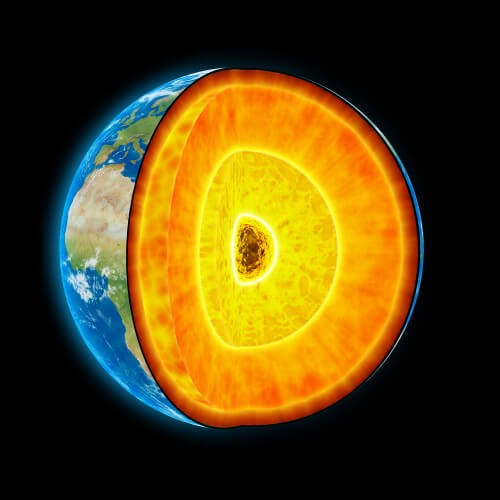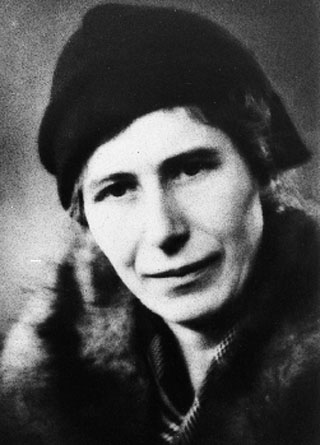Inge Lehmann tested the propagation of seismic waves over the entire Earth in the pre-computer era, and concluded that the Earth's core is solid

How can you find out what is happening inside the earth? The heat there is too high, the pressure is extreme and the distances are too great to be explored by robotic tools. Therefore, the scientists are forced to rely on the seismic waves - the shock waves created during earthquakes and explosions that pass through the Earth's interior, in order to reveal the Earth's internal structure.
Every year many earthquakes occur, only today we were informed of another strong earthquake, which occurred in western Nepal, which only about three weeks ago was almost destroyed by a 7.8 magnitude earthquake. Hundreds of earthquakes occur every year and each one provides geologists with more data for the picture of the Earth's interior.
The seismic signals consist of several types of waves. Those important for understanding the internal structure of the earth are called primary P waves or compressional waves as well as S waves (secondary or residual waves), which move through solid and liquid materials in different ways.
The seismograph was invented in 1880. By the end of the decade, seismographs were installed all over the world. At the time, geophysicists believed that the Earth contained a liquid core surrounded by a solid mantle. This is a Torah surrounded by a membrane. The layers are separated from each other through sudden changes in the soil structure, a phenomenon called discontinuities.
In 1929 a strong earthquake occurred near New Zealand. The Danish seismologist Inge Lehman "the only seismologist in Denmark" (of both sexes) as she called herself - studied the shock waves of that earthquake and was amazed by what she saw. Some P-waves that should have been deflected by contact with the liquid core traveled some distance inside the Earth's core and then were repelled by some type of boundary.

Her interpretation of the data was the basis of a 1936 paper in which she developed a theory that the center of the Earth consists of two parts: a solid core surrounded by a liquid outer core, and which is separated by what was later called the "Lehmann Boundary". Lehmann's hypothesis was confirmed in 1970 when more sensitive seismographs detected waves being pushed out of the Earth's solid core made of highly compressed iron.
Lehmann was born in Denmark in 1888 and was a pioneer among women and among scientists. She received her primary education in a progressive school where boys and girls were treated the same. It was a sharp contrast to the scientific and mathematical community she later joined. In a conversation with her nephew, Nils Gross, she said: "You should know how many men weaker than me (professionally) I had to face and I lost, Gross said in his memoirs. "I remember Inga sitting one Sunday in her favorite garden next to their table full of cardboard boxes of oatmeal. In the boxes were cards with information on earthquakes from around the world. This was before computer processing was possible, but the system was similar. With these cards in the cereal boxes Inga measured the speed of progress of earthquakes to all parts of the world. From this information, she derived her theory of the Earth's internal composition.
Later Lehman became an authority in the field of the structure of the upper mantle. It carried out massive research in other countries, and benefited from the growing interest in seismology to detect nuclear tests that had been banned. When Lehmann received the William Bowie Medal in 1971, the American Geophysical Union's (AGU) highest honor, she was described as "a master of the black art that no level of computing can rival." Lehmann died in Shiva Tova at the age of 105.
In the same topic on the science website:

6 תגובות
It doesn't make sense, but it's not us, it's the infrastructure of the WordPress site.
Avi Shalom, may I ask why you force the commenters to enter a web address as a condition for sending a comment?
What logic is there in this?
Not clear
Father, thank you for the explanation.
They measured the tremors with seismographs, she compiled a record of their intensity everywhere in the world and thus could know how they affected the other side of the earth.
"With these cards in the cereal boxes, Inga measured the speed of the progress of the earthquakes"
Very strange phrasing, I thought the measurement was done with a seismograph, not with cards.